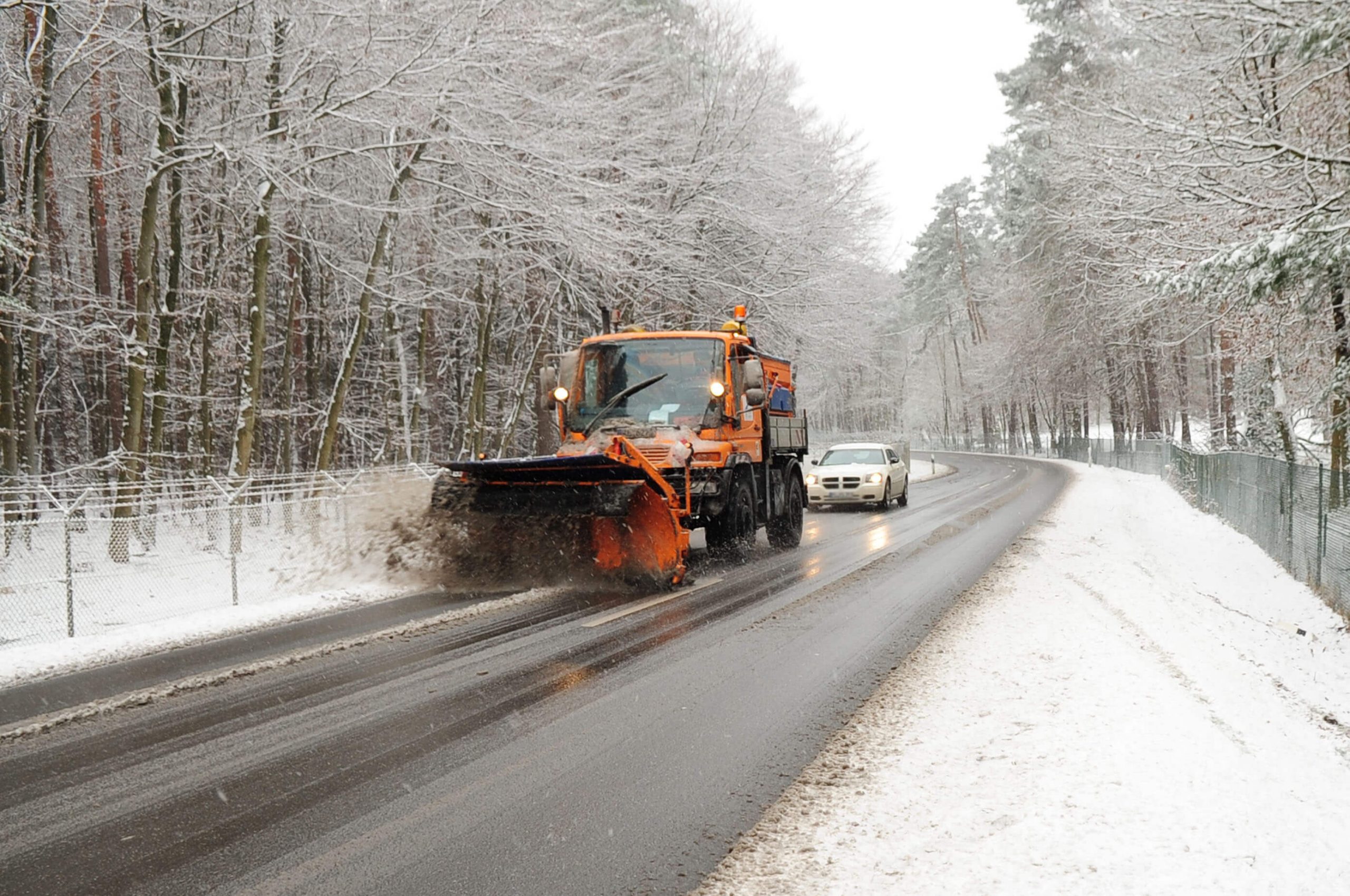Operating a forklift truck can be a tricky operation at the best of times, but factor in bad winter weather and the task can become not only difficult but dangerous. The United Kingdom is no stranger to poor weather over the winter months, and as the high winds and rains of autumn turn into freezing temperatures and ice, you need to do everything you can to stay safe whilst operating your forklift.
Snow, ice, sub-zero temperatures and strong winds can all affect a forklift’s performance and, therefore, the safety of the person operating it. As the UK braces for what forecasters say will be a particularly harsh winter, here’s everything you need to know about safely operating a forklift over the coming cold spell.
Check the forecast
It may seem like common sense, but you need to know what the weather outlook is before you even think about operating a forklift outdoors. Sometimes it will be a case of needs must – a job may have to get done without delay, but that shouldn’t mean taking risks. If the forecast looks too grim then safety must come first. Know what you’re heading out into before you choose to operate a forklift, because blizzards and bad weather can creep up on you when you’re not prepared.
Remain alert Forklift
Operators always need to have their wits about them, on the lookout for potential and developing hazards. That becomes all the more important if you’re operating a forklift outdoors in winter. Snowy or icy surfaces could lead to a loss of control, so should be avoided whenever possible. You should keep your hands on the wheel at all times and be constantly prepared to react to a sudden skid. Traction decreases on slippery surfaces, so stopping times can be much longer and you’re more at risk of a sudden loss of control.
Visibility can also be reduced in the winter, particularly as the nights draw in. Never operate your forklift if the visibility is too poor for it to be safe and, as always, make sure you’re never behind the wheel when you feel tired.
Do safety checks
Safety checks should be carried out all year round, but adverse winter weather can seriously affect your forklift truck. Before you start the engine, check all the important components for damage. The batteries, engines, electrics and hydraulics are the most likely parts to suffer damage from freezing temperatures or damp penetration. Also pay close attention to your tyres, checking the pressure and adjusting as required. Overinflated tyres won’t have the best grip on untreated surfaces, while underinflated tyres risk going flat – not what you want when the roads are icy.
At this time of year, it’s also important to check your anti-freeze levels and oil gauge, both of which will prevent the engine from freezing up when the mercury plummets.
Slow and steady
On snowy and icy surfaces, you should always drive at low speeds to reduce the risk of skidding and losing control. We understand that forklift operators are often working under time constraints but safety must always take priority over deadlines. Time may be lost because of snow or sleet, but if you rush and have an accident you risk your own safety and damaging your forklift, which in the end will only slow operations down even more.
Forklifts are much harder to handle than a car even on good weather days. Factor in snow, ice and sleet and they become even harder to keep under control. Reduce your speed significantly if you want to stay safe.
Warm up
You wouldn’t try to drive your car to work without giving the engine a chance to warm up, and the same goes for your forklift. Before you start working, turn the engine on and let it idle for a few minutes to bring it up to temperature.
Trying to start work with a cold engine can cause all sorts of problems with the transmission and combustion, so treat your forklift with care and give it some time to warm up while you do the same with a cup of coffee.
Check you’re properly clothed
Whether you’re working in a warehouse or outdoors, winter requires a different level of preparedness when it comes to clothing. You’re going to need thick gloves, sturdy boots, a warm hat and – most importantly – the obligatory high-vis jacket. If you’re not well wrapped up before you start, the cold can quickly become a distraction.
It only takes a momentary lapse in concentration to hit an icy patch and lose control of your vehicle. Reduce the chances of being distracted by the cold by making sure you’re well insulated.
Driving a forklift in winter is all about being prepared well in advance of the cold snap. Be prepared, be vigilant and stay safe.


